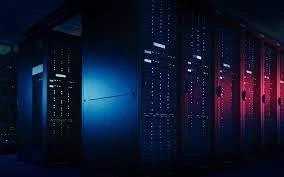Data is the lifeblood of modern business. From client information and financial records to project files and marketing materials, having secure and easy access to your data is essential. For many growing businesses and even home users, managing this ever-increasing volume of information can become a significant challenge. This is where Network Attached Storage (NAS) comes in, offering a powerful and streamlined solution.
If you've found yourself juggling multiple external hard drives, struggling with the limitations of cloud storage subscriptions, or needing a better way to collaborate with your team, a NAS system might be the answer. This guide will explain what Network Attached Storage is, how it works, and why it's becoming an increasingly popular choice for secure, centralized, and accessible data management.
What is Network Attached Storage (NAS)?
Network Attached Storage is a dedicated file storage device connected to a network, allowing multiple users and devices to access data from a central location. Think of it as your own private cloud, housed securely within your home or office. Unlike an external hard drive that connects directly to a single computer via USB, a network attached storage device connects to your Wi-Fi router. This simple difference allows any device on that network—be it a laptop, desktop, smartphone, or tablet—to access the stored files.
A typical NAS system is a small, self-contained box that holds one or more hard drives. It runs its own lightweight operating system, which manages file access, security, and other applications. This design makes NAS devices incredibly versatile and easy to use, even for those without a deep technical background.
The Key Benefits of Using a NAS
Switching to a NAS solution can bring a host of advantages for both businesses and individuals. It's more than just a place to keep your files; it's a way to fundamentally improve how you interact with your data.
Centralized Data for Easy Collaboration
One of the biggest advantages of a NAS is creating a single, centralized hub for all your files. Instead of having important documents scattered across different computers and hard drives, everything is organized in one place. This makes it incredibly easy for team members to collaborate on projects. Multiple users can access and work on the same files simultaneously, without the need to email different versions back and forth. This streamlines workflows and significantly boosts productivity.
Remote Access from Anywhere
With a NAS, your data is always within reach, no matter where you are. Most modern NAS devices offer features that allow you to securely access your files over the internet. Whether you are traveling for work, working from home, or just need to grab a file on your phone, you can connect to your NAS and retrieve what you need. It provides the convenience of cloud storage but with the security and control of having your hardware in your own possession.
Enhanced Data Security and Redundancy
Data loss can be catastrophic. NAS devices offer robust solutions to protect your valuable information. Many NAS systems support a RAID (Redundant Array of Independent Disks) configuration. In a RAID setup, data is mirrored across multiple hard drives. If one drive fails, your data remains safe and accessible on the other drives, providing a critical layer of protection against hardware failure. You also have complete control over who has access to your files, with the ability to set user permissions and passwords for enhanced security.
Affordable and Scalable Storage
Cloud storage services often come with recurring monthly or annual fees that can add up over time, especially as your storage needs grow. Affordable NAS storage offers a more cost-effective alternative. While there is an initial investment in the hardware, you avoid ongoing subscription costs. Furthermore, NAS systems are highly scalable. When you start running low on space, you can easily add more or larger hard drives to your device, allowing your storage capacity to grow alongside your needs.
How to Choose the Right NAS for You?
With a growing market, finding the right NAS device can seem daunting. However, by considering a few key factors, you can narrow down your options and find the perfect fit.
Consider Your Storage Needs
First, estimate how much storage space you currently need and how much you anticipate needing in the future. NAS devices come in various configurations, from single-bay units for basic home use to multi-bay systems for businesses with large data requirements. It's often wise to choose a model with more bays than you currently need to allow for future expansion.
Evaluate Performance Requirements
Think about how you will be using the NAS. If you plan on streaming high-definition media or running applications directly from the device, you'll need a model with a more powerful processor and more RAM. For simple file storage and backups, a more basic model will suffice.
Look for User-Friendly Software
The operating system is the heart of your NAS. Look for a device with an intuitive and user-friendly interface that makes it easy to set up and manage your storage.
A Smarter Way to Manage Your Data
Network Attached Storage provides a versatile, secure, and affordable solution for managing your digital life. By centralizing your files, you simplify collaboration, enable remote access, and ensure your data is protected. Whether you're a small business owner looking to streamline operations or a home user wanting a better way to store your photos and media, a NAS system can transform how you access and protect your information.


